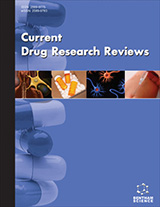Abstract
Background: Despite many successes in the discovery of numerous cancer chemotherapeutic agents from natural sources, some of the moieties were dropped because of its inefficiency or serious toxicity. Mitosis is an ordered series of fundamentally mechanical events in which identical copies of the genome are moved to two discrete locations within the dividing cell. The crucial role of the mitotic spindle in cell division has identified, which is an important target in cancer chemotherapy. In the present study, we are reporting molecular docking studies and in silico pharmacokinetic profiles of selected phytoconstituents obtained from Amyris pinnata.
Methods: Molecular docking studies of selected phytoconstituents were performed using iGEMDOCK. The crystal structure of the protein was exported from the protein data bank (PDB id: 4C4H). In silico pharmacokinetic profile of selected phytoconstituents was performed using the SWISSADME server.
Results: Compound AMNP6 showed higher binding affinity as compared to the standard ligand. All the selected phytoconstituents have passed the Lipinski rule of five and shown no violations.
Conclusion: Good binding affinity and drug likeliness of the AMNP6 suggest that it can be further investigated and explored as mitotic spindle kinase inhibitor in cancer disease.
Keywords: In silico design, molecular docking studies, ADMET prediction, Amyris pinnata, assembly checkpoints, natural medicinal plants.
Graphical Abstract
[http://dx.doi.org/10.1146/annurev-biochem-061611-090435]]
[http://dx.doi.org/10.1016/0014-4827(60)90234-2] [PMID: 14429980]
[http://dx.doi.org/10.1111/j.1601-5223.1938.tb03221.x]
[PMID: 3879679]
[http://dx.doi.org/10.1021/np9604893] [PMID: 9014353]
[http://dx.doi.org/10.1021/ja00738a045] [PMID: 5553076]
[http://dx.doi.org/10.1016/j.toxicon.2004.05.008] [PMID: 15302526]
[PMID: 9562603]
[http://dx.doi.org/10.1016/j.fitote.2010.10.003] [PMID: 20951188]
[http://dx.doi.org/10.1055/s-2007-969641] [PMID: 17340271]
[http://dx.doi.org/10.1021/np200796e] [PMID: 22260294]
[http://dx.doi.org/10.1021/np50047a044]
[PMID: 19419026]
[http://dx.doi.org/10.1021/np50015a016]
[http://dx.doi.org/10.3109/07357909709047587] [PMID: 9316630]
[http://dx.doi.org/10.1016/S0169-409X(00)00129-0 PMID: 11259830]





























